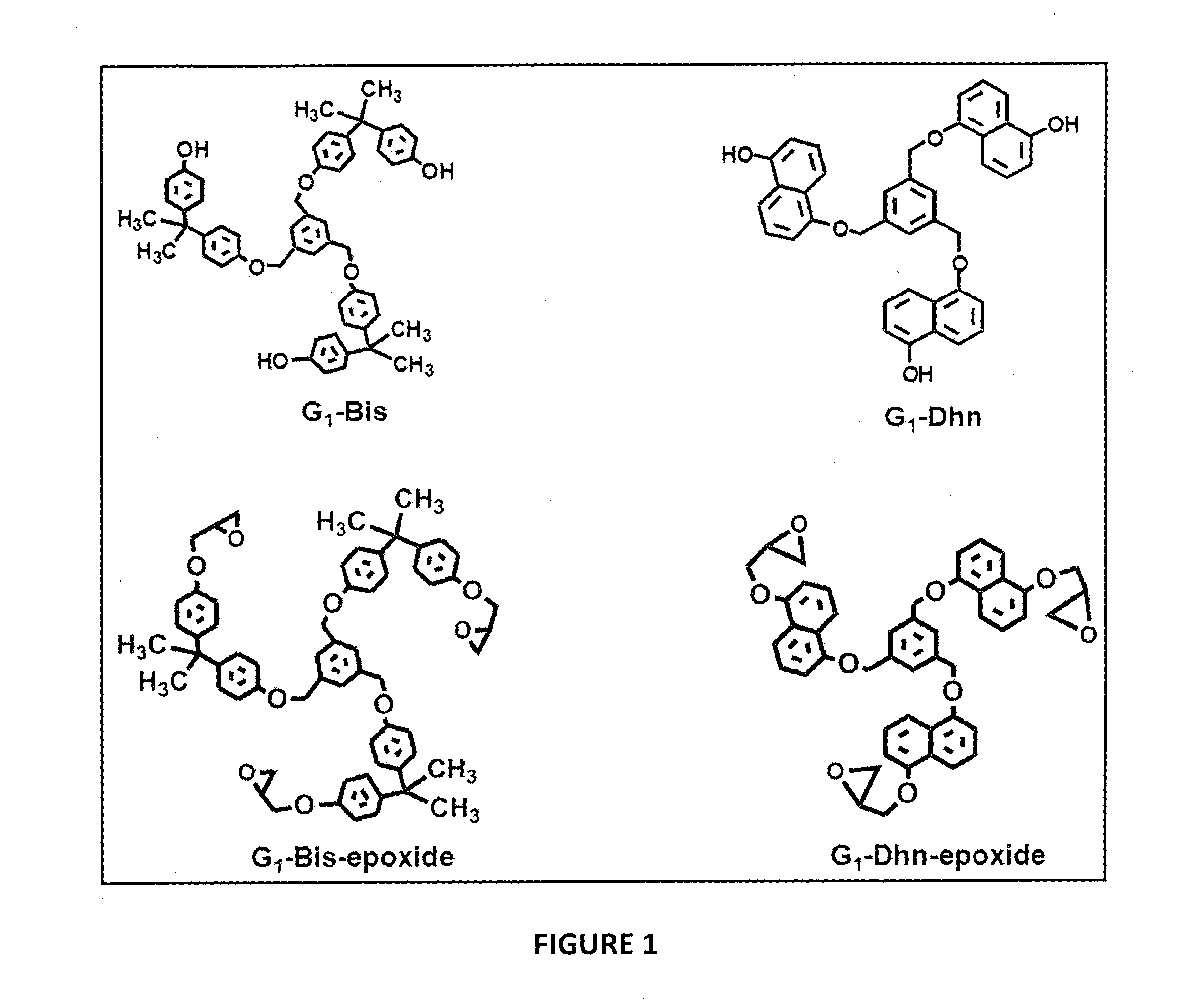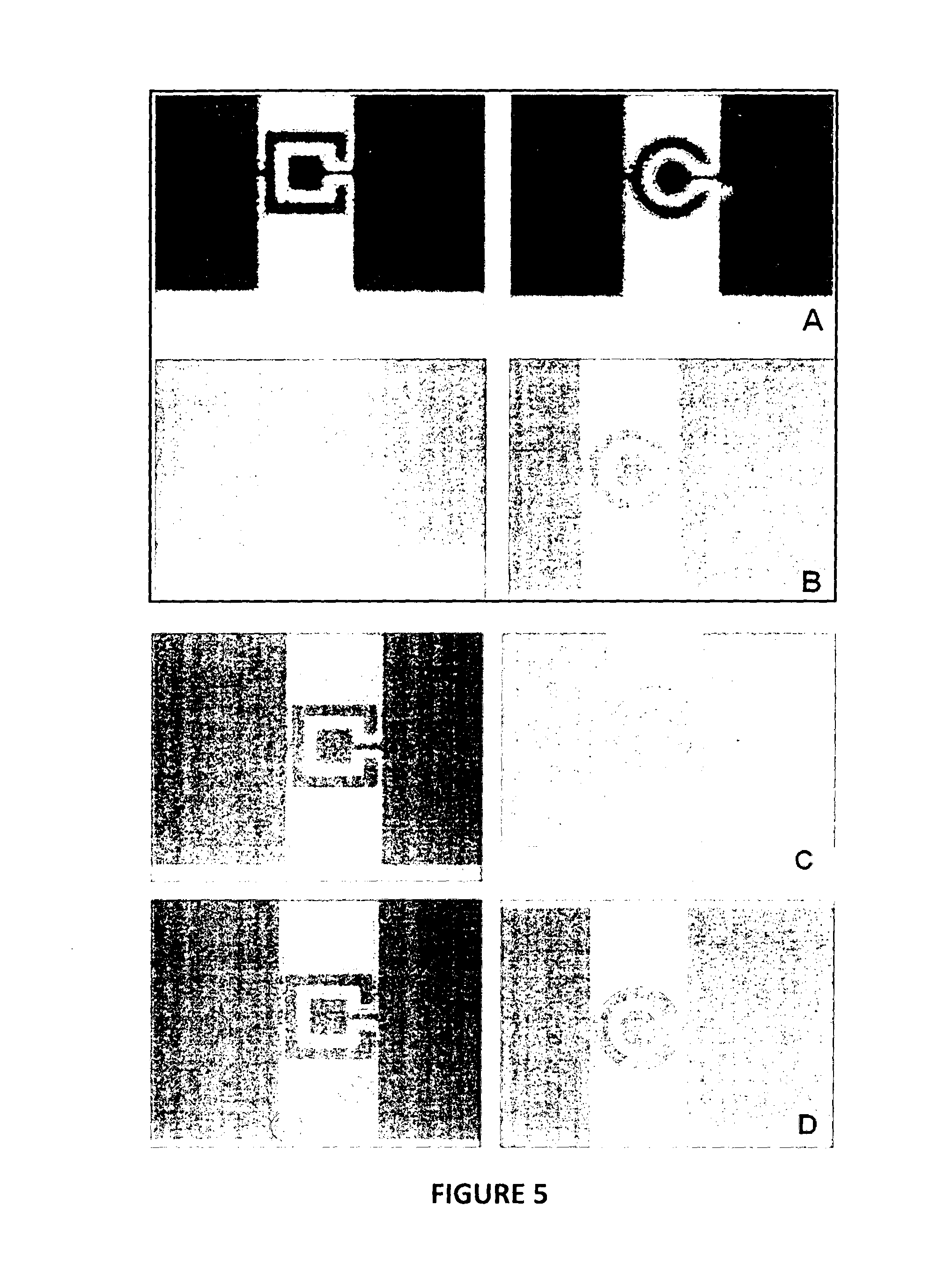Resist for electron beam and optical lithography
a technology of resist and electron beam, applied in the field of resist for electron beam and optical lithography, can solve the problems of poor adhesion to the substrate, pattern deformation, and certain limitations
- Summary
- Abstract
- Description
- Claims
- Application Information
AI Technical Summary
Benefits of technology
Problems solved by technology
Method used
Image
Examples
example 1
Preparation of G1-Tris
[0075]Trisphenol 47 g (0.156 moles) was dissolved in 400 ml DMF, 97 g (0.702 moles) of anhydrous potassium carbonate was added and stirred for 30 min and maintained at 65° C., 2.8 g (7.8×10−3 moles) of 1, 3, 5-trisbromomethyl benzene in 20 ml DMF was added drop wise over 40 min. After the addition was complete, stirring was maintained for 12 h. DMF was recovered on rotary evaporator and reaction mixture was extracted with ethyl acetate. The solvent was evaporated and the G1-Tris formed was purified by column chromatography, using petroleum ether and ethyl acetate (70:30 v / v) as elutant.G1-Tris yield was 8.50 g (85%).
[0076]1H-NMR spectrum of G1-Tris in acetone-4 indicate complete disappearance of the peak at 4.50 ppm corresponding to methylene in 1, 3, 5-trisbromomethyl benzene and appearance of the peak at 5.11 ppm confirms formation of G1-Tris. Peak at 9.28 ppm corresponds to the aromatic hydroxyl functionality of Trisphenol unit and at 7.52 ppm to the aromati...
example 2
Preparation of G1-Bis
[0077]25.5 g (0.112 moles) bisphenol-A, 47g (0.336 moles) of K2CO3 in 150 ml DMF and 2 g (5.6×10−3moles) of 1, 3, 5-trisbromomethyl benzene in 20 ml DMF were reacted as described above. G1-Bis yield was 5.00 g (87%).
[0078]1H NMR (DMSO-d6): 8.19 δ(3H, -OH), 6.7-7.19 (24H, phenolic protons), 7.56 (3H, benzylic protons), 5.13 (6H, Ph-CH2), 1.62 (18H, —CH3).
example 3
Preparation of G1-Dhn
[0079]18 g (0.112 moles) 1, 5-Dhn, 47 g (0.336 moles) of K2CO3 in 150 ml DMF and 2 g (5.6×10−3 moles) of 1, 3, 5-trisbromomethyl benzene in 20 ml DMF were reacted as described above G1-Dhn yield was 3.80 g (81%).
[0080]1H NMR (DMSO-d6): 9.10 δ(3H, —OH), 6.94-7.85 (18H, naphthalene ring protons), 7.88 (3H, benzylic protons), 5.42 (6H, Ph-CH2).
PUM
| Property | Measurement | Unit |
|---|---|---|
| Fraction | aaaaa | aaaaa |
| Fraction | aaaaa | aaaaa |
| Glass transition temperature | aaaaa | aaaaa |
Abstract
Description
Claims
Application Information
 Login to View More
Login to View More - R&D
- Intellectual Property
- Life Sciences
- Materials
- Tech Scout
- Unparalleled Data Quality
- Higher Quality Content
- 60% Fewer Hallucinations
Browse by: Latest US Patents, China's latest patents, Technical Efficacy Thesaurus, Application Domain, Technology Topic, Popular Technical Reports.
© 2025 PatSnap. All rights reserved.Legal|Privacy policy|Modern Slavery Act Transparency Statement|Sitemap|About US| Contact US: help@patsnap.com



